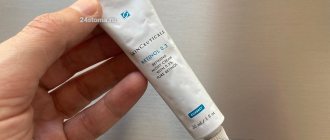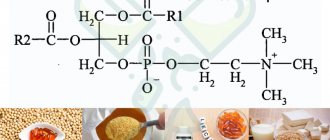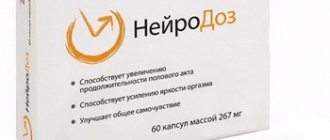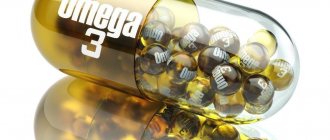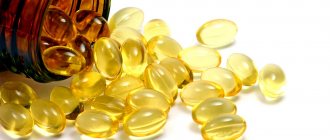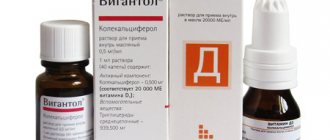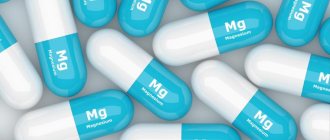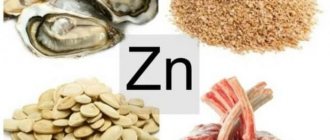Glycerin is widely used in the medical, cosmetology and food industries as an important component. Glycerin is used to create creams, masks, lotions and other cosmetics that you can prepare yourself at home. Therefore, it will not be superfluous to learn the methods of use, properties, positive and negative features of the useful substance.
Compound
A bottle of Glycerin solution for external and topical use contains 25 grams of distilled glycerin (glycerol) .
One rectal glycerin suppository contains 1.44/2.46 grams of glycerol as an active substance and auxiliary ingredients: Polyethylene glycol (polyethylene glycol) in an amount sufficient to prepare one suppository weighing 1.53-1.69/2.61- 2.89 grams; Аcidum stearicum (stearic acid); Sodium carbonate decahydrate (sodium carbonate decahydrate).
Benefits of the drug for hair
Today, glycerin can be found in almost every composition of shampoo, conditioner, and hair mask, since its benefits have long been proven. After using the complex of products, the hair becomes strong, shiny and well-groomed.
Features of the drug:
- hair follicles are activated;
- keratin scales are smoothed;
- volume increases;
- dandruff and brittleness disappear.
In order not to harm your hair, it is not recommended to abuse the products, as glycerin can be addictive, which will subsequently cause harm.
Description of release form
Medical glycerol has two dosage forms:
- rectal suppositories;
- solution intended for local and external use.
Suppositories have a pointed torpedo-shaped shape, their color is close to white. Children's candles are produced weighing 1.53-1.69 grams, candles for adults weigh from 2.61 to 2.89 grams.
The liquid form of the drug is a syrupy, transparent, colorless liquid of viscous consistency, odorless and with a sweetish taste. The medium of an aqueous solution of glycerol is neutral.
Pharmacodynamics and pharmacokinetics
In its pure form, glycerol irritates the skin, but this effect completely disappears when the substance is diluted with water, petroleum jelly or lanolin . Used as an external agent, glycerol has a dermatoprotective effect, softens and restores the skin.
The antiseptic properties of glycerol make it possible to use it to prevent skin wounds from becoming infected.
Rectal use of glycerol provokes a laxative effect. The product softens feces, gently irritates the intestinal mucosa and stimulates the contractility of the walls of the rectum.
Glycerin (for internal use) can increase osmotic pressure and reduce ocular and intracranial pressure. The use of liquid glycerin orally also helps reduce cerebral edema.
Indications for use
Pharmacy glycerol is indicated:
- Rectally in the form of microenemas and suppositories - for constipation and anal fissures .
- Inside - for intracranial pressure, glaucoma , Reye's syndrome ( acute hepatic encephalopathy) . The drug is recommended for use in combination with other therapeutic measures.
- Externally in the form of applications - to soften excessively dry skin and mucous membranes.
A solution of sodium tetraborate in glycerin (borax) is used to treat candidiasis (thrush) , inflammation of the tonsils ( tonsillitis ), inflammation of the mucous membrane and lymphoid tissue of the pharynx ( pharyngitis ), as well as for the treatment of bedsores and skin affected by fungal diseases.
The widespread use of glycerin solution in medicine is ensured due to its properties: the physicochemical characteristics of glycerin make it possible to increase the viscosity indicators or, on the contrary, to dissolve a particular drug.
Since the substance is characterized as non-toxic, it is also used in the pharmaceutical industry. Added to medical ointments, creams and pastes, glycerol prevents them from drying out and, having antiseptic , disinfects them. Glycerol is also added to tablets as an auxiliary component.
Laxative suppositories made on the basis of glycerol are used to treat constipation of various origins in children and adults, facilitating bowel movement from its contents.
In folk medicine, the drug is often used to treat throat diseases . An effective cough remedy is lemon, honey and glycerin. To prepare this medicine, take the juice of one lemon and 35-40 ml (2 tablespoons) of glycerin. Add honey to the mixture, mix thoroughly and take 1 teaspoon six to eight times a day for a severe cough.
Glycerin in cosmetology. What are glycerin-based cosmetics made from?
Glycerin for the face is used in moisturizing, nourishing and toning masks, as part of cleansing and refreshing lotions, creams and acne . Thus, its benefits for the face are difficult to overestimate.
The beneficial properties of glycerin for the skin are expressed in the ability of this substance not only to moisturize, but also to smooth, heal and protect the skin from pollution and microbial .
A face mask with glycerin may include dried flowers, plant leaves (for example, aloe or mint), berries (both dry and fresh), rice flour, oatmeal, dry clay, and mineral water.
One of the most popular is a mask with glycerin and vitamin E. Vitamin E for the face is considered a truly indispensable remedy: it prevents early skin aging, smoothes wrinkles, relieves signs of fatigue, and even has the ability to treat problem skin in teenagers.
To prepare the mask, you need to take 10 vitamin E and squeeze their contents into a bottle of glycerol (25 ml). The resulting mixture of glycerin and vitamin E is shaken well and applied to a previously cleansed face for 40-60 minutes, after which the face is wiped with a napkin (no need to wash). The greatest effect on the skin is observed if this procedure is done immediately before bed.
Glycerin masks for wrinkles can also be prepared using honey, oatmeal, vitamin B1 or ascorbic acid .
To prepare facial lotions, glycerol is mixed with herbal decoctions, infusion of lemon zest, and floral cologne. To prepare a mixture for acne, mix ammonia (20 ml), good cologne (40 ml), water (80 ml) and glycerol (5 ml).
In combination with vitamin C , or more precisely, with its less stable form, L-ascorbic acid , glycerol is used to prepare an antioxidant serum .
Thanks to the properties of ascorbic acid to stimulate the production of collagen in the skin and protect against the negative effects of UV rays, this serum not only minimizes the appearance of wrinkles, but also makes existing scars less noticeable.
To prepare this remedy, you need to take equal amounts of vitamin C , vegetable glycerin and distilled water and mix them in a dark glass bottle. A thin layer of serum is applied to the face before going to bed and left on it all night.
Glycerin for hair is used in the form of shampoos, conditioners and hair masks. This is due to its ability to effectively moisturize, soften and thicken hair, add shine and stimulate growth.
Shampoos and hair masks with glycerin can be purchased at the store or prepared yourself. In addition, if you decide to prepare such a cosmetic product at home, you won’t have to worry about where to get the ingredients for it: soap base, vitamins, and herbal preparations can be found in any pharmacy.
Glycerol is also used for hand care. The simplest pharmacological product is the so-called “stinky hand mash,” which is a mixture of ammonia and glycerol.
At home, glycerin liquid is prepared by mixing glycerol and ammonia . Rubbing this mixture is beneficial not only for the skin, but also for nails - after just a few procedures, the nails acquire a beautiful color and begin to shine.
Glycerin for hands can also be used as part of potato or fermented milk masks. Warm baths with starch and glycerol also improve the condition of the skin of the hands, for the preparation of which take 20 ml of glycerol, 2 tablespoons of starch and 500 ml of warm water. The bath is taken until the water begins to cool.
For feet, glycerin is recommended to treat cracked heels and soften rough skin. Baby-like heels are every woman's dream.
However, prolonged exposure to the sun, wearing open shoes and things made of synthetic materials, as well as insufficient care of the skin of the feet leads to roughness, peeling and cracking of the heels.
An effective remedy for rough heels is a mixture of glycerin and acetic acid. To prepare it, add vinegar essence to the bottle of glycerin up to the neck. The mixture in the bottle is shaken and then applied with a cotton swab or cotton sponge to problem areas.
Before using glycerin and vinegar for your heels, it is recommended to first steam the skin of your feet and scrub them with a pedicure brush. After applying the product, put plastic bags on your feet, and put socks on top of them. The duration of the procedure is from half an hour to 40 minutes, but it is best to leave the mixture overnight.
ammonia are no less effective for heels . The mixture is prepared as simply as described above, only the ingredients for its preparation - ammonia and glycerin - are taken in a 1:1 ratio. A mixture with ammonia for feet is also recommended to be applied to the skin before bed and left overnight.
Another simple recipe for glycerin for heels is a recipe for a mixture that contains glycerin, a 10% ammonia solution, 95% ethyl alcohol and purified water.
Preserving flowers in glycerin
Answering the question “What is glycerin?”, we can say that this product is to some extent a preservative.
It is often used as a preservative for meat, wheat grains, red blood cells, reindeer antlers, etc. Glycerol is also used for preserving flowers.
There are quite a lot of recommendations on how to preserve flowers in glycerin. It is important to remember that flowers with thin leaves and very delicate petals preserve their appearance much worse with this method of preservation than plants with denser leaves and fleshy stems (that is, this method of preserving a bouquet is more suitable for roses or orchids than for violets or poppies).
The benefits and harms of glycerol
It is believed that glycerol used for cosmetic purposes is harmful to the skin. The following statements are only partly true.
The hygroscopic properties of this substance allow it to absorb moisture from the environment and retain it where it is used. As a result, a thin moist film is formed on the skin, thanks to which the same moisturizing effect is felt.
However, studies have shown that in cases where air humidity does not exceed 65%, glycerol “sucks” water from the deep layers of the skin (instead of taking moisture from the air) and retains it on the surface of the skin.
That is, the harm of vegetable glycerin is that dry skin dries out even more, since water is sucked out of young healthy cells in order to moisturize dead cells of the surface layer of the skin.
Thus, in cosmetology, the use of glycerol is recommended only with sufficient air humidity.
Field of medicine
Glycerin is considered a safe product for adults; it does not cause fermentation in the body or the proliferation of pathogenic bacteria. The substance is well absorbed in the small intestine and does not enter the large intestine. It also does not have carcinogenic properties that damage DNA and cause birth effects.
The component is added to pharmaceutical cough syrups and expectorants. It may be present in toothpastes and mouthwashes. In tablets, the substance is used as a humectant. It is part of laxatives. Glycerin is taken as first aid for emergency treatment of eye pressure; it quickly lowers it.
Glycerin is safe for human health. Sometimes it is used orally to treat various diseases.
Beneficial effects of the drug:
- reduces weight;
- improves endurance during physical activity and helps the body retain moisture;
- relieves diarrhea and diarrhea;
- reduces cerebral edema during neurosurgical operations;
- prevents fainting when blood flow to the brain is disrupted.
Glycerin can also be used intravenously in neurology. It is used to reduce intracranial pressure in stroke, meningitis, Rhine syndrome, encephalitis, meningitis, and central nervous system injuries. Athletes take the drug to prevent dehydration.
Contraindications
Glycerin suppositories for constipation are contraindicated for:
- hemorrhoids in the acute stage;
- cracks in the anus;
- inflammatory and tumor diseases of the rectum;
- appendicitis;
- bleeding;
- diarrhea;
- hypersensitivity to glycerol.
Taking glycerol orally is contraindicated for diabetes mellitus , people with liver and/or kidney disease, and cardiovascular disorders.
Side effects
Glycerol, used in large quantities, provokes tissue dehydration. In addition, solutions of this product can cause allergic reactions , expressed in the form of burning, irritation of the skin and mucous membranes.
Long-term use of rectal suppositories can lead to irritation of the rectum (to eliminate it, 10-15 ml of heated vegetable oil, for example, olive or sunflower, should be injected into the intestine) and disruption of the physiological process of defecation. , catarrhal proctitis may develop .
Taking glycerol solution orally can cause nausea, vomiting, headache, thirst, arrhythmia and hyperglycemic coma . Long-term use leads to dehydration.
Instructions for use of Glycerin (dosage regimen)
Glycerin suppositories: instructions for use
To relieve constipation, suppositories with glycerin should be injected into the rectum once a day. The optimal time for administering a rectal suppository is 15-20 minutes after breakfast. According to the instructions for glycerin suppositories, their use is stopped after intestinal motility is normalized. In this case, the treatment is considered successful. For children, children's dosage is used.
How long does it take for glycerin suppositories to start working? In about 10 minutes.
Liquid Glycerin: instructions for use
As a laxative, liquid glycerin is used both in pure form and in the form of concentrated solutions; it is also sometimes used in the form of a microenema with glycerin-soda water.
The product is taken orally in diluted form, mixed in equal proportions with water. The dosage is determined based on the patient’s weight: for each kilogram of his body weight, it is recommended to take 2-3 ml of solution, which is equivalent to 1-1.5 grams of the drug in its pure form.
With subsequent doses of the drug, its dosage should be halved. To improve taste, the glycerin solution is taken chilled.
Externally, liquid glycerin is used in the form of an 84-88% solution, treating the affected areas of the skin with it as necessary.
How to use borax with glycerin
Many people are interested in what borax with glycerin is. Sodium tetraborate or, as it is also popularly called, borax , is an anesthetic with antibacterial properties, which is a salt of a strong base and weak boric acid . The instructions for a solution of borax in glycerin recommend the use of this product for the treatment of:
- candidiasis;
- colpitis;
- bedsores;
- stomatitis (including in newborn babies);
- cracks in the skin and mucous membranes;
- bacterial lesions of the mucous membrane and skin.
Borax in glycerin for thrush is especially effective if the disease is at an early stage. In this case, treatment may not even require the use of other medications.
Borax is used quite simply: the product is applied to a cotton swab and then lubricated with it on the vaginal walls.
Borax in glycerin for stomatitis is used externally for rinsing the mouth, treating affected areas of the skin and mucous membranes, as well as for douching. The dose is determined by the attending physician, the course of treatment lasts from 7 to 10 days.
Method 5 for shine
To give your car a shine not only inside, but also outside, try diluting glycerin with water in the following proportion:
- 200 ml water;
- 40 ml glycerin.
The mixture must be applied to the cleaned surface of the car. After the next wash of your favorite car, dampen a slightly clean rag in the freshly prepared solution and cover the entire surface of the car, including the windows, with the mixture. Minor scratches will disappear from the surface of the body, and the paint will noticeably freshen, even the matte finish begins to shine in the sun. This product will help extend the life of your car's paintwork.
It is better to polish a car at above-zero temperatures and indoors.
Glycerin for newborns
Can glycerin suppositories be used by newborns? It is recommended to use them no earlier than the child turns 3 months old, and special baby glycerin suppositories will be needed.
However, in cases where it is really necessary, suppositories with glycerin are also prescribed for newborns.
The product is not addictive and does not have a negative effect on the body as a whole. However, with unsystematic use in unlimited quantities, disturbances in physiological peristalsis and defecation , enterocolitis , drug-induced diarrhea , and intestinal obstruction .
Glycerol derivatives and their place in the metabolism of living organisms
Glycerides
Glycerol (3D model), atoms and electron pairs at oxygen atoms are shown (pink color)
Triglycerides are derivatives of glycerol and are formed by the addition of higher fatty acids to it. Triglycerides are important components in the metabolic process in living organisms.
Fats and oils are hydrophobic and insoluble in water, since the hydroxyl groups of glycerol are replaced by low-polar fatty acid residues.
Glycerin during pregnancy
During pregnancy, suppositories with glycerin are one of the safest and most effective means to cope with constipation . Glycerol is non-toxic, so the composition of the suppositories does not harm the health of the mother and child.
By the way, according to reviews, glycerin suppositories are effective during pregnancy, after childbirth, and during breastfeeding. They are used for constipation caused by:
- changes in intestinal motility due to hormonal changes and stress suffered during childbirth;
- hemorrhoids;
- segmental spasm of the large intestine;
- psychological fear of defecation (especially with ruptures of the birth canal).
A 10% solution of borax in glycerin, which is used to eliminate fungus and treat candidiasis, .
Moreover, its use is allowed even in the early stages of pregnancy, when the use of most other medications is extremely undesirable or completely prohibited.
special instructions
Glycerin - what is it?
Glycerin is an organic compound that belongs to the class of substances polyhydric alcohols .
Since the compound has 3 hydroxyl groups (-OH), it is a trihydric alcohol or, in other words, a triol (compounds with 2 hydroxyl groups - for example, ethylene glycol - are called dihydric alcohols or diols).
Being the simplest representative of the group of trihydric alcohols, the compound is characterized by chemical properties typical of the latter.
The name of the substance in Latin is Glycerinum. Product name (European Pharmacopoeia) - Glycamed.
Its structural formula is as follows:
CH2 - CH - CH2 | | | OH OH OH
Chemical molecular formula of the substance: HOCH2-CH(OH)-CH2OH.
Molar mass - 92.094 g/mol.
In nature, the compound occurs widely in the form of glycerides (or acylglycerols ), which are esters formed by organic or mineral acids and glycerol.
Glycerides, in turn, are a key component of oils and fats of natural origin.
For example, one of the most common long-chain triglycerides, all three chains of which contain oleic acid , is glycerol trioleate. Its natural sources are peanut, corn, olive, soybean, and sunflower oils.
Homologues are butanetriol-1,2,4 and pentantriol-1,3,5.
Obtaining glycerin
Industrial glycerin is obtained as a by-product of saponification of edible fats, which in the presence of various catalysts (enzymes, acids, alkalis) are broken down into glycerol and aliphatic carboxylic (fatty) acids.
To obtain glycerol and soap, saponification reactions of glycerol tristearate (glycerol ester of stearic acid) with sodium hydroxide are used.
In industry, synthetic methods for producing the substance are increasingly used, one of which is chlorohydrin.
of propene (propylene) into the simplest unsaturated aldehyde propenal (acrolein) is also used .
Other ways to obtain the substance are:
- method of glycol fermentation of sugar;
- hydrolysis of starch.
Distilled glycerol is obtained in accordance with GOST 6824-96
Physical properties
In its pure form, glycerol is transparent, odorless, tastes sweet, and is hygroscopic (that is, it is capable of absorbing water vapor from the air up to 40% by weight). It is soluble in water: the substance mixes well with water in various proportions, which is accompanied by the release of heat and a decrease in volume (contraction).
Wikipedia states that glycerol is highly soluble in water, alcohols, moderately soluble in ether and ethyl acetate, and insoluble in most hydrocarbons, ethers and chloroform.
The melting point of the substance at normal pressure is 17.8 degrees C, the boiling point is 290 degrees C (with weak decomposition). The density of glycerol is 1.26 g/cm³.
The viscosity of glycerol is determined by the dynamic viscosity coefficient, which changes depending on temperature. Thus, the viscosity index at 0°C is 12100 mPa*s, at 40°C - 330 mPa*s, and at a temperature of 200°C - 0.22 mPa*s.
Chemical properties of Glycerin, what does glycerin react with?
Despite the fact that it is the simplest trihydric alcohol, glycerol undergoes chemical reactions that are characteristic of monohydric alcohols.
Glycerol is capable of interacting with a large number of organic and inorganic compounds, resulting in the formation of complex, simple (aliphatic and aromatic) esters, as well as metal acylglycerols.
Glycerol reacts with sodium, which replaces all three hydrogen atoms in the -OH hydroxyl groups.
The substance has the ability to form azeotropic mixtures with naphthalene, its individual derivatives and a number of other substances.
Glycerol forms 3 series of metal derivatives - glycerates. Moreover, they are formed even when the substance interacts with heavy metal oxides. This is evidence that the properties that characterize acids are more pronounced in it than in monohydric alcohols.
The substance is also capable of reacting with hydrogen halides and interacting with nitric acid. The result of interaction with hydrohalic acids and halides are mono- or dihalohydrins, and with nitric acid - trinitroglycerin (a heavy oily substance with explosive and, to some extent, medicinal properties).
The reaction of glycerol with copper hydroxide produces a blue solution. When polyhydric alcohols react with Cu(OH)2 in the presence of an alkali, the hydroxide dissolves, and the reaction product is a transparent blue liquid.
This is a qualitative reaction for glycerol, which is used not only for the detection of glycerol, but also for the detection of other polyhydric alcohols containing hydroxyl groups (-COOH) at adjacent carbon atoms.
When interacting with inorganic and carboxylic acids, esters (complete and incomplete) are formed; as a result of dehydration of glycerol, acrolein is obtained.
Like other alcohols, glycerol undergoes oxidation. Depending on what substance is used as an oxidizing agent, as a result of this reaction one can obtain: glyceraldehyde, glyceric, mesoxalic or tartronic acid, dihydroxyacetone.
Under the influence of potassium permanganate or potassium dichromate, glycerol is oxidized to carbon CO2 and hydrogen H2O.
Reacting with bromine water, glycerol is oxidized to dihydroxyacetone. This is the Denizhe reaction, which is one of the methods for the qualitative and quantitative determination of glycerol. The resulting dihydroxyacetone is reduced using Nessler's reagent and Fehling's solution.
How to recognize glycerin?
To recognize glycerol, the reagent is copper hydroxide. The formula of the reagent for recognizing glycerol is Cu(OH)2.
To recognize the substance, you need to take CuSo4 and NaOh. Their interaction produces freshly precipitated copper hydroxide, which, when reacting with polyhydric alcohols, forms a transparent blue solution.
What is glycerin used for?
Glycerol industry, paint and varnish industry, electrical and radio engineering, tobacco and military industries, agriculture. In addition, the product is used for blackening rubber with your own hands.
Glycerol monostearate is a high-quality food emulsifier. In addition, it has the properties of a dispersant and stabilizer. Having a rejuvenating effect, it helps maintain the freshness of products, stabilizes and improves the structure of fats.
Glycerin in cosmetics ensures the binding of free water, thus eliminating the need to add synthetic preservatives to the latter and providing products with a shelf life long enough for their use.
In addition, it allows the effective ingredients of a cosmetic product to be transported directly to the skin so that they can exert their beneficial properties where needed.
Glycerol has also found use in everyday life. It helps remove “difficult” stains from clothes, is used as a polish for furniture, mirrors and parquet, and also to restore the appearance of leather goods.
Tourists use glycerin and potassium permanganate to start a fire: they put a little potassium permanganate on the easily flammable material and then add one or two drops of the substance. After about 15 seconds, smoke appears and spontaneous combustion occurs.
Glycerol is used to moisten hookah tobacco. At the same time, it is better to add a product intended for smoke machines to the hookah, since it is originally intended for evaporation. Adding glycerol to tobacco allows you to:
- increase its smokiness;
- revive old and dried out tobacco.
Glycerol is used to give the required density to the solution for soap bubbles.
There are a huge number of resources on the Internet that tell you how to make a good soap solution at home for a children's party. One of the most popular recipes for soap bubbles is a recipe that involves mixing ⅔ cup of dishwashing liquid (preferably with the least amount of impurities) with 4 cups of boiled or distilled water and 40-60 ml of glycerol.
Many people are interested in what can replace glycerol at home. Regular sugar has similar properties to this substance. It also increases the density of the finished solution and improves the quality of the bubbles.
How to make a mixture for different bubbles at home
There are a lot of recipes for making soap bubbles, since usually successful mixtures are obtained experimentally.
A simple recipe with a minimum of ingredients
To prepare, you only need three components:
- soft water (boiled, melted or distilled) – 300 ml;
- “Fairy” detergent - 100 ml;
- glycerin - 50 ml.
Cooking process:
- Pour the required amount of warm water into the basin.
- Pour in Fairy.
- Add glycerin.
- Mix everything carefully without raising foam.
- Let it sit in the refrigerator for 24 hours.
The mixture is ready, you can blow bubbles.
A simple way to make soap bubbles - video
https://youtube.com/watch?v=7XxrsyFhFs8
Recipe using sugar and baking powder
We use the following components:
- distilled water - 300 ml;
- soap base - 50 ml;
- glycerin - 25 ml;
- granulated sugar - 5 teaspoons;
- baking powder - 1 teaspoon.
The process of preparing the mixture for soap bubbles:
- Pour sugar and baking powder into the bottom of the container.
- Add glycerin.
- Pour in detergent.
- Fill all components with water.
- Mix thoroughly without foam and leave to infuse for 12 hours.
After the soap film has become dense and solid, the bubbles are ready.
Soap bubbles with sugar - video
Recipe for giant soap bubbles
Ingredients and their proportions:
- distilled water - 400 ml;
- “Fairy” dishwashing liquid – 100 ml;
- glycerin –75 ml;
- sugar –5 teaspoons;
- gelatin – 5 teaspoons.
Cooking process:
- Soak the gelatin and let it swell.
- Strain the gelatin and drain off excess water.
- Melt the gelatin and sugar mixture on the stove, but do not boil.
- Fill everything with water.
- Add detergent and stir.
- Leave to infuse for a day.
The mixture made according to this recipe produces large and strong bubbles.
Giant soap bubbles - video
There are a huge number of recipes for making soap bubbles on the Internet. They are often similar in their set of components, less often in their proportions. The main thing in cooking is to follow the basic recommendations and be ready to experiment. There is no universal recipe for soap bubbles, find the one that suits you best and perfect it!
Reviews of Glycerin
Reviews of Glycerin suppositories are positive. All of them indicate the high effectiveness of glycerin suppositories for constipation of various origins.
Reviews of Glycerin, used for facial skin and hair, allow us to conclude that this product is almost irreplaceable in cosmetology. When used correctly, it quickly produces the expected effect and, in addition, is very accessible and inexpensive.
Women especially love the mixture of glycerin and vitamin E. In terms of its effectiveness, the product is not inferior to expensive pharmacy cosmetics, but at the same time it costs an order of magnitude cheaper.
Borax in glycerin is no less highly valued The bacteriostatic activity of the drug allows it to effectively treat such unpleasant diseases as thrush , stomatitis , bedsores , tonsillitis and pharyngitis .
Price of Glycerin, where to buy glycerin for internal use?
The price of pharmaceutical glycerin is low. Thus, the cost of liquid glycerin in Moscow, depending on the volume of the bottle, varies from 11 to 25 rubles. The average price of glycerin suppositories in pharmacies is 133-150 rubles. The approximate price of borax in glycerin is from 8.65 to 25 rubles.
The price of Glycerin suppositories in Ukraine is from 42 to 63 UAH. In the pharmacy, the price of liquid glycerin varies from 1.96 to 3.5 UAH.
You can find out where this or that dosage form of glycerin is sold and how much it costs in a pharmacy in a particular city through Internet sites.
Where can I buy technical and food grade Glycerin?
Food glycerol in Ukraine is sold on average for 11-20 hryvnia per bottle, while technical glycerol can be purchased at a price of 1.08 hryvnia.
In Russia, the price of food glycerol is 40-50 rubles, technical glycerol is from 30 rubles per 1 kg.
You can order and buy food and technical glycerol through online stores.
- Online pharmacies in RussiaRussia
- Online pharmacies in UkraineUkraine
- Online pharmacies in KazakhstanKazakhstan
ZdravCity
- Glycerin rectal suppositories.
2.11 g 10 pcs. JSC "Nizhpharm" 176 rub. order - Lugol's with glycerin spray local. approx. 1% 50g LLC "Lekar"
101 rub. order
- Gel-soap Watermelon with glycerin doy-pack Fresh Juice 460mlNPO Elfa
100 rub. order
- Hand cream Glycerin with rosehip Home Doctor 42mlNPO Elfa
57 RUR order
- Gel-soap Watermelon with glycerin Fresh Juice 460mlNPO Elfa
164 RUR order
Pharmacy Dialogue
- Lugol's solution with glycerin 50ml with MFF spray
67 RUR order
- Nitroglycerin tablets 0.5 mg No. 40 Farmamed
51 RUR order
- Glycerin solution 25 g Ivanovskaya farm. f-ka.
16 rub. order
- Nitroglycerin tablets 0.5 mg No. 40 Medisorb
59 RUR order
- Glycerin solution 25gIodine technology and marketing
20 rub. order
show more
Pharmacy24
- Glycerin 25ml solution PrAT FF "Viola", Ukraine
13 UAH. order - Hand cream with glycerin 44 g moisturizing Aroma, Kharkov
10 UAH.order
- Nitroglycerin 0.5 mg No. 40 tablets PrAT "Technolog", Uman, Cherkasy region, Ukraine
8 UAH order
- Nitroglycerin 0.5 mg No. 40 tablets TOV NVF Mikrokhim, Ukraine
8 UAH order
- Lugol with glycerin 25 g solution PRAT "Fitofarm", Ukraine
8 UAH order
PaniPharmacy
- Glycerin suppositories for children suppositories Glycerin suppositories for children 1405 mg No. 12 Romania, Antibiotice
75 UAH order
- Glycerin suppository Glycerin suppositories. 1.24g No. 10 Russia, Nizhpharm
80 UAH order
- Glycerin suppositories for adults suppositories Glycerin suppositories for adults 2100 mg No. 12 Romania, Antibiotice
101 UAH order
- Lugol's solution liquid Lugol's with glycerin solution 25 ml Ukraine, Viola FF JSC
9 UAH order
- Soap-scrub glycerin Cypress Thyme 90g Ukraine, Aromatika
42 UAH order
show more
What is it used for?
Glycerol is used to treat skin diseases, as a laxative, in the production of cosmetics, household chemicals, and personal care products.
At home, it is necessary for making:
- Mask.
- Soap.
- Balzamov.
- Lotions.
- Medicinal ointments.
- Warm baths for hands and feet.
- Other cosmetics.
Homemade cosmetics with glycerin help improve the condition of the epidermis, nails, and hair. They become healthy, shiny, soft.
In everyday life, glycerol will help get rid of berry, tea or coffee stains. To do this, you need to rub the dirt with an undiluted substance, and after an hour, wash it off. You can get rid of annoying dust that constantly settles on furniture by wiping the surfaces with an aqueous solution with glycerin.
In the food industry it is known as additive E-422.
